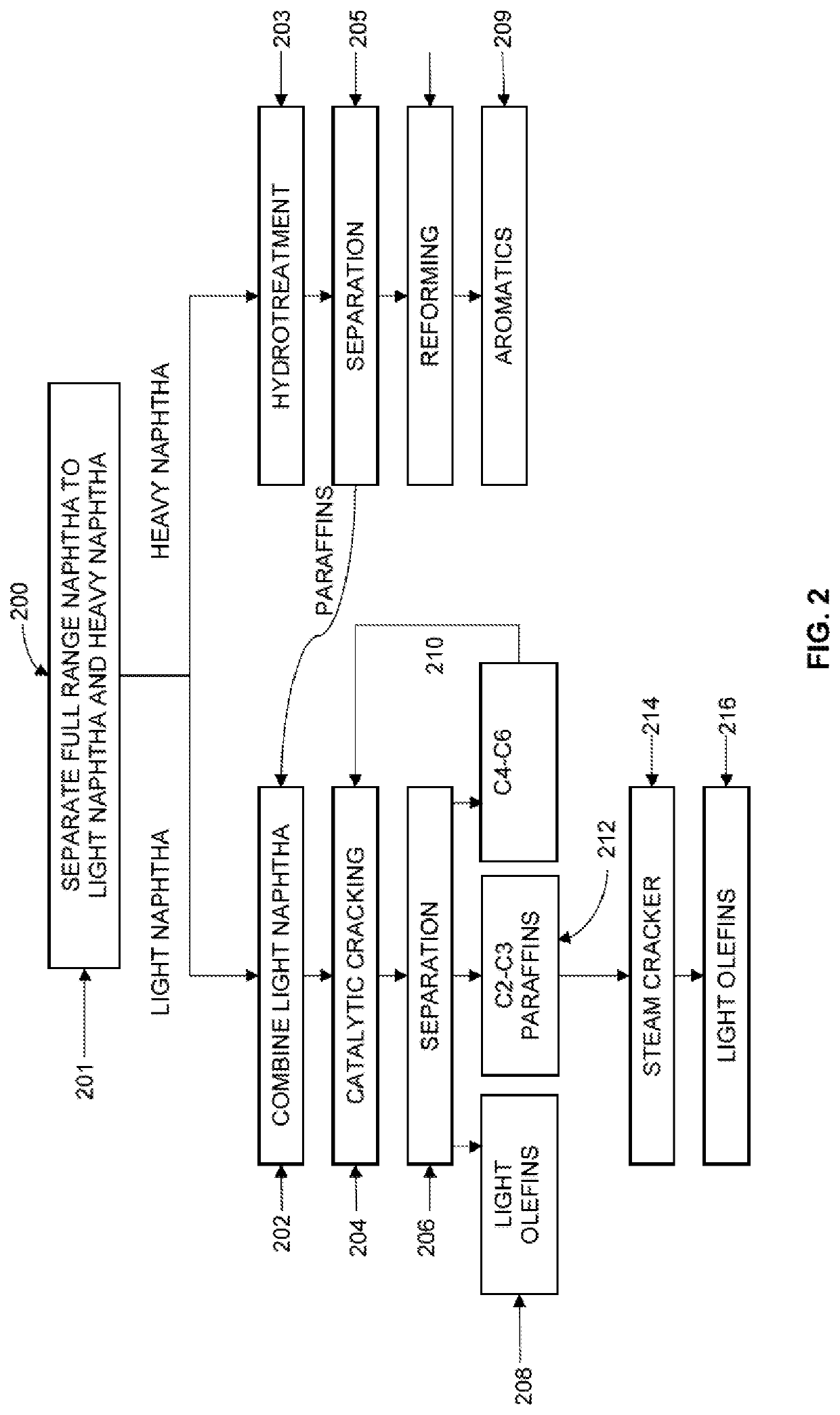Process of producing light olefins and aromatics from wide range boiling point naphtha
a technology of boiling point naphtha and aromatics, which is applied in the field of manufacturing of light olefins, can solve the problems of not being able to meet the needs of the market, so as to achieve the effect of maximizing light olefin production
- Summary
- Abstract
- Description
- Claims
- Application Information
AI Technical Summary
Benefits of technology
Problems solved by technology
Method used
Image
Examples
Embodiment Construction
[0042]A discovery has been made of a process and a system that addresses the current problems associated with processing full range naphtha to yield light olefins and other products. The process includes the use of an integrated naphtha reforming process and a cracking process for catalytically cracking light naphtha. The light naphtha is separated from the full range naphtha and fed to a catalytic cracker such as an (fluid catalytic cracker) FCC, while the heavy naphtha is hydrotreated, paraffins removed via separation, and the product is fed to a reforming unit. The removed paraffins are optionally combined with the light naphtha stream and cracked. The cracked product is separated into various streams, including a light olefin stream which are then either recovered or further processed. A C2 to C3 paraffin stream produced by separating the cracked light naphtha stream may be further processed to yield additional light olefins.
[0043]FIG. 1 shows a system 100 for producing light ol...
PUM
 Login to View More
Login to View More Abstract
Description
Claims
Application Information
 Login to View More
Login to View More - R&D
- Intellectual Property
- Life Sciences
- Materials
- Tech Scout
- Unparalleled Data Quality
- Higher Quality Content
- 60% Fewer Hallucinations
Browse by: Latest US Patents, China's latest patents, Technical Efficacy Thesaurus, Application Domain, Technology Topic, Popular Technical Reports.
© 2025 PatSnap. All rights reserved.Legal|Privacy policy|Modern Slavery Act Transparency Statement|Sitemap|About US| Contact US: help@patsnap.com


